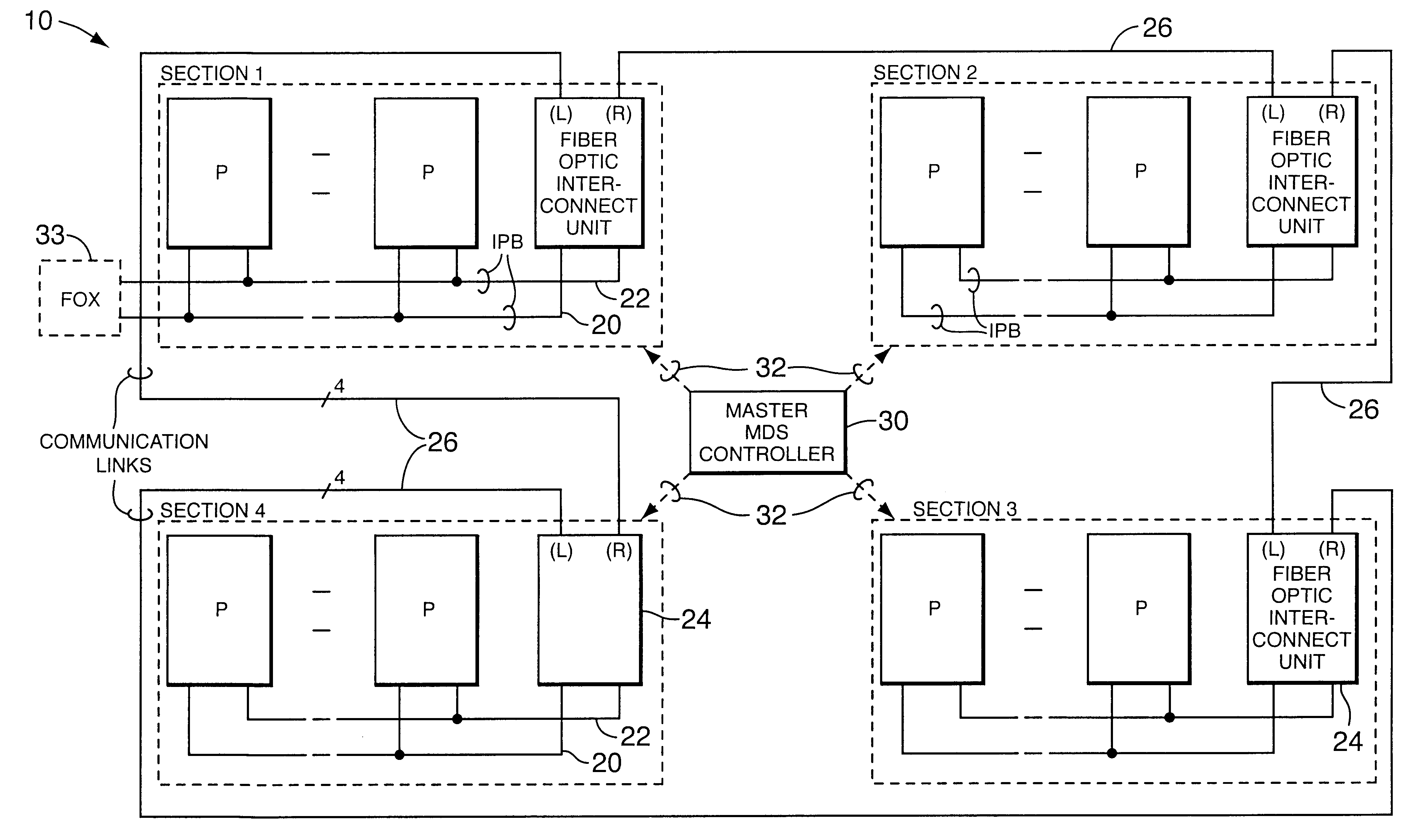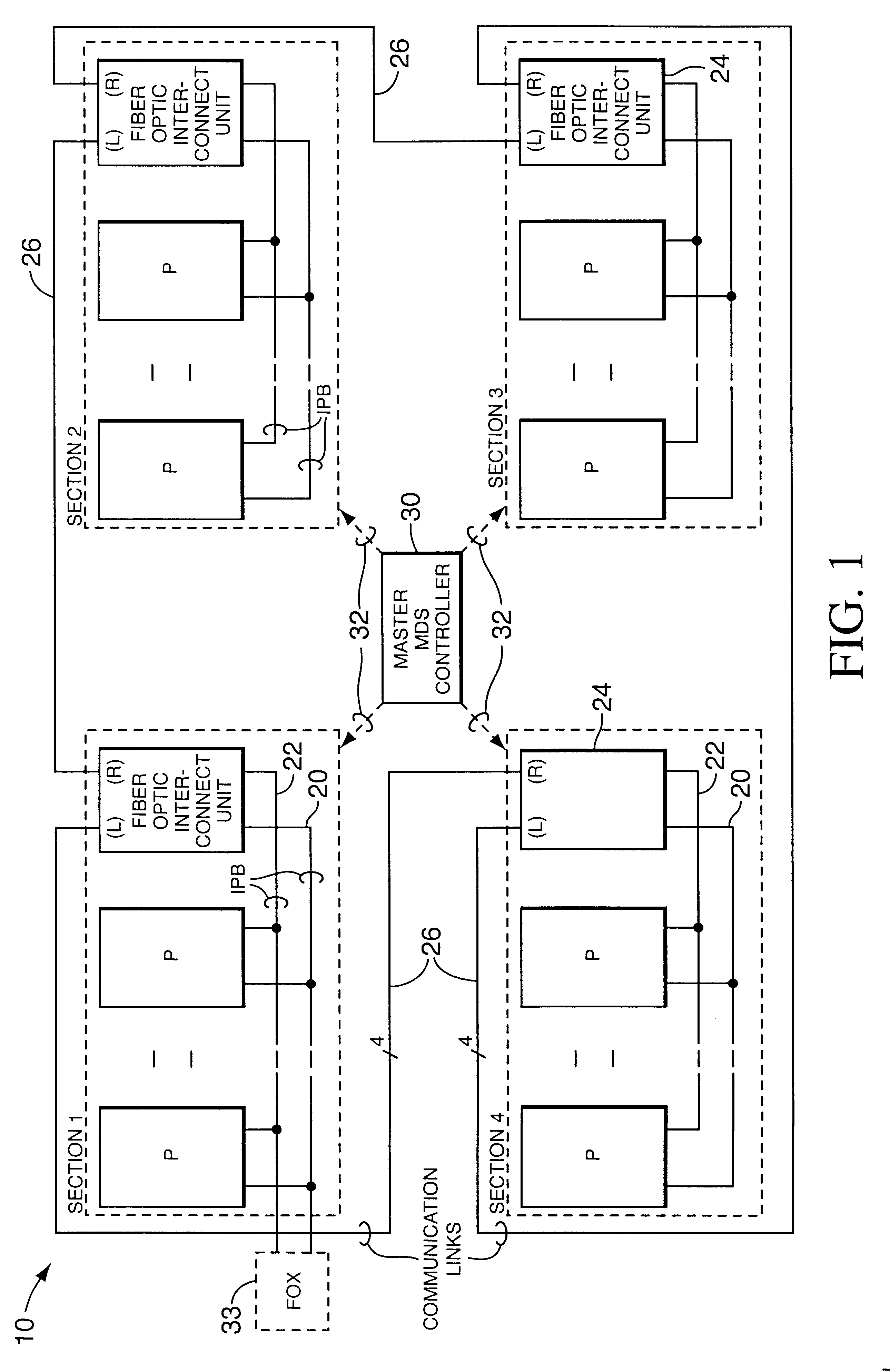Multiprocessor system with fiber optic bus interconnect for interprocessor communications
a fiber optic bus and interconnection technology, applied in the field of multi-processor systems with fiber optic bus interconnection for inter-processor communications, can solve the problems of high probability of errors, additional packet latency, and problems that can be encountered
- Summary
- Abstract
- Description
- Claims
- Application Information
AI Technical Summary
Benefits of technology
Problems solved by technology
Method used
Image
Examples
Embodiment Construction
Overview:
Referring first to FIG. 1, a multiprocessor system comprising a number of individual processor units (P) are shown as being arranged in four "sections," 1, . . . ,4. Within each of those sections 1, . . . ,4, are preferably at least two processor units (P) coupled to one another by preferably a pair of interprocessor buses (IPB) 20, 22 for processor to processor communication. Processor unit and bus pairs are preferred for implementing a fault tolerant philosophy, but that philosophy is not necessary to the present invention.
The IPBs 20, 22 are generally constructed and operated as taught by U.S. Pat. Nos. 4,224,496 and 4,888,684, whose teachings are incorporated herein by reference to the extent necessary. Each IPB 20, 22 is composed of multiple signal lines for carrying parallel bits of data, control signals, and the like.
Also within each of the sections 1, . . . ,4 is a fiber optic interface unit 24 that connects the IPBs 20, 22 to a communications link 26.
Preferably, th...
PUM
 Login to View More
Login to View More Abstract
Description
Claims
Application Information
 Login to View More
Login to View More - R&D
- Intellectual Property
- Life Sciences
- Materials
- Tech Scout
- Unparalleled Data Quality
- Higher Quality Content
- 60% Fewer Hallucinations
Browse by: Latest US Patents, China's latest patents, Technical Efficacy Thesaurus, Application Domain, Technology Topic, Popular Technical Reports.
© 2025 PatSnap. All rights reserved.Legal|Privacy policy|Modern Slavery Act Transparency Statement|Sitemap|About US| Contact US: help@patsnap.com



